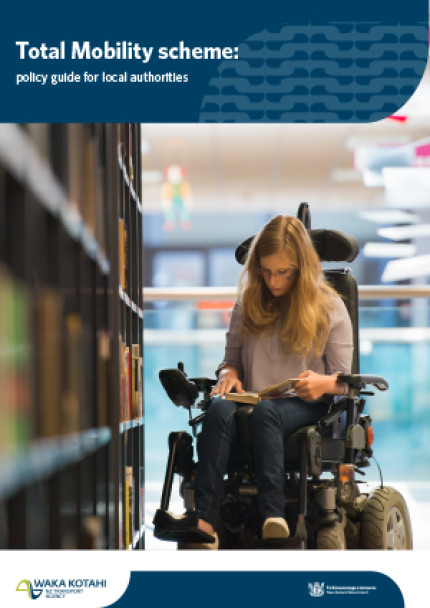The purpose of this policy guide is to achieve a nationally consistent approach for local authorities to administer the Total Mobility scheme in their respective regions.
This guide sets out the requirements, policy, principles, processes and explanatory notes to manage the Total Mobility scheme.
About Total Mobility
Funded in partnership by local and central government, the Total Mobility scheme assists eligible people, with long term impairments to access appropriate transport to meet their daily needs and enhance their community participation. This assistance is provided in the form of subsidised door to door transport services wherever scheme transport providers operate.
The Total Mobility scheme is intended to complement the provision of public transport services, which are expected to be as accessible as possible to meet different mobility needs.
Waka Kotahi NZ Transport Agency first published a policy guide for local authorities in 2008 and a user guide in 2010.
For the user guide:
Total Mobility around New Zealand: a regional guide to using the Total Mobility scheme

Land Transport NZ encourages adequate provision of wheelchair-accessible taxis by providing a flat rate payment (in addition to the fare) to the transport operator for each trip taken by a Total Mobility scheme member using a wheelchair hoist.
A flat rate payment of $10 (including GST) is to be paid to Total Mobility transport operators for each Total Mobility trip that requires the use of a wheelchair hoist. The payment is fully funded by Land Transport NZ and transport operators in all regions are eligible for this payment irrespective of whether the local authority has signed up to phase 1 or phase 2 improvements.
Work category 521: Total Mobility flat rate payments has been designated specifically for flat rate payments, with a 100 percent financial assistance rate.
The objectives of the flat rate payment are to:
Although this payment is fully funded by Land Transport NZ, the assistance of local authorities is required to administer the payment to Total Mobility transport operators, as legislation prevents Land Transport NZ from making payments from the National Land Transport Account directly to transport operators.
In order to claim this payment, Total Mobility transport operators must agree to both of the following conditions:
These conditions must be added to existing contracts between the local authority and each Total Mobility transport operator, or agreed to in a separate flat payment contract between the two parties, before the transport operator will be eligible for the payment and before Land Transport NZ will accept payment claims from the local authority.
In order to process the payment for wheelchair-assisted Total Mobility trips, local authorities will need to be able to distinguish between hoist and non-hoist trips. Claims made for the payments will need to be verified as part of Land Transport NZ's regular procedural audit function.
Note: this improvement was removed from phase 2 and implemented independently in July 2007. At this time, the flat rate payment is available to commercial operators only. Land Transport NZ will review this policy in 2008.